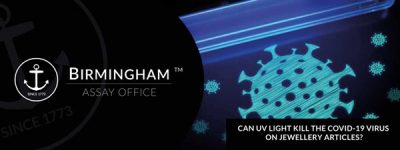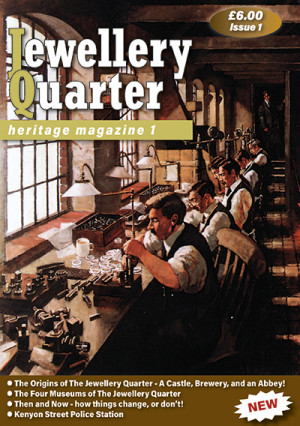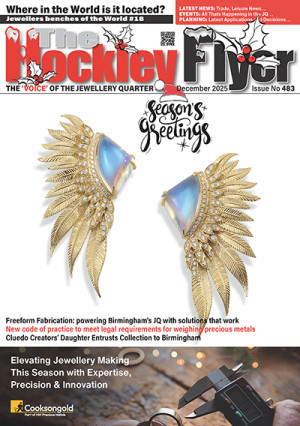 A current hot topic is how to kill Covid-19 to ensure that jewellery articles are safe to handle.
A current hot topic is how to kill Covid-19 to ensure that jewellery articles are safe to handle.
Dippal Manchanda, Technical Director of AnchorCert Analytical, in the Birmingham Assay Office, said: “We have not found any scientific research data to support the claims that UV light kills Covid-19, and we believe that so far, no testing of this particular strain on a jewellery surface has been performed anywhere, hence the lack of evidence to suggest that the new coronavirus can be killed by UV light. However, several coronaviruses similar in construction, have been found to be susceptible to UVC energy.”
The ultraviolet spectrum is a band of electromagnetic radiation at higher energies than visible light, split into four major categories:
1. UV-A (400 – 315 nm),
2. UV-B (315 – 280 nm),
3. UV-C (280 – 200 nm),
4. vacuum-UV (VUV, 100 – 200 nm).
The use of UV-C as a disinfectant is supported by decades of scientific research. UV-C radiation is absorbed by DNA and RNA (the genetic code for all lifeforms), changing its structure. This damage inhibits the ability of the affected cells to reproduce, meaning that they cannot infect and are no longer dangerous. So, UV technically does not ‘kill’ bacteria, but rather it inhibits replication, or sterilizes it, by destroying the DNA.
The effectiveness of UVC light is based on the variables of:
- time (length of exposure)
- intensity of the source (how “bright” the “light” is)
- distance (how far the source is from the target).
High intensities for a short period and low intensities for a long period are fundamentally equal in lethal action on bacteria. The inverse square law applies to germicidal ultraviolet as it does to light: the killing power decreases as the distance from the lamps increases. The average bacterium will be killed in ten seconds at a distance of six inches from the lamp in a standard Ultraviolet Germicidal Fixture.
Exposure to UV-C radiation is regulated globally, with a common agreement on the risk to human health and safe exposure levels. These regulations and standards set limits on allowable exposure, though in all cases, it is recommended to avoid UV exposure where possible. The placing on the market of UV-C lamps is regulated by Directive 2014/35/EC, so-called Low Voltage Directive (LDV), on electrical equipment designed for use in defined voltage ranges.
Germicidal UVC rays do not produce much heat; therefore, it is less likely that these rays will discolour or oxidise the metallic surface. UVC rays are a form of ionising radiation, many pigments, and dyes, therefore, may absorb UV and change colour.
Transient dyes and colours of materials such as plastic, textile, leather, adhesive etc. may fade from prolonged exposure to ultraviolet rays. Certain gemstones could be temporarily affected due to their ability to temporarily absorb a small amount of light and an instant later release a small amount of light of a different wavelength.
UVC is completely safe when the eyes and skin are protected. Without any PPE, prolonged, direct exposure to UVC light can cause temporary skin redness and eye irritation but does not cause skin cancer nor cataracts. Care must be taken when evaluating new technologies racing to the jewellery market in a bid to help mitigate the new coronavirus.
We suggest that while using UVC technology the following precautions must be observed by the jewellery industry:
- UV-C irradiation of the skin, eyes, or any body part should be avoided wherever possible.
- Always wear appropriate PPE when handling un-shielded UV-C radiation sources (e.g. long-sleeved clothing, gloves, and a UV-opaque face shield).
- Always use UV-C devices in accordance with the manufacturer’s operating instructions to ensure safe operation, and within appropriate enclosures where light leakage has been controlled, and where the risks have been properly managed.



